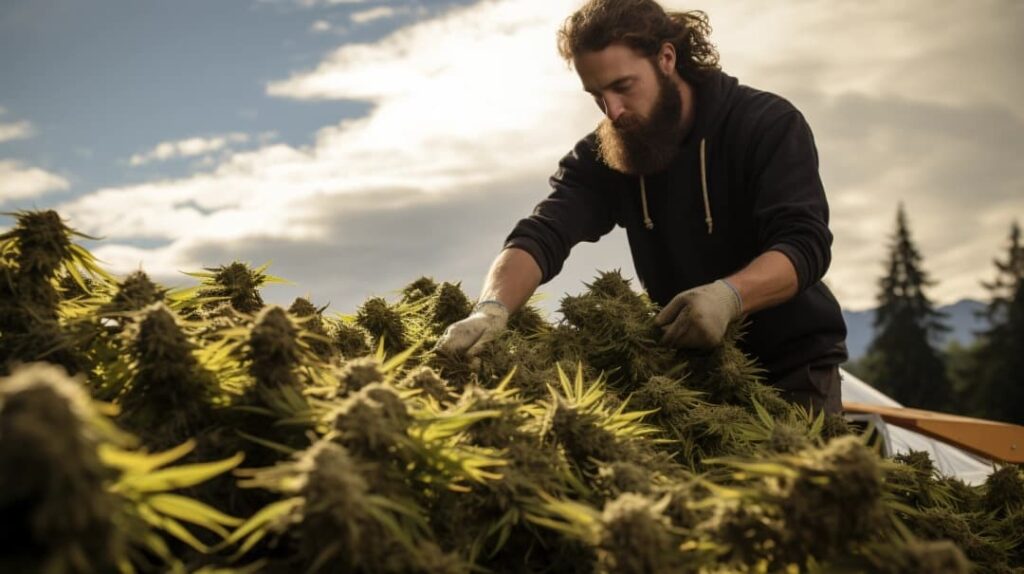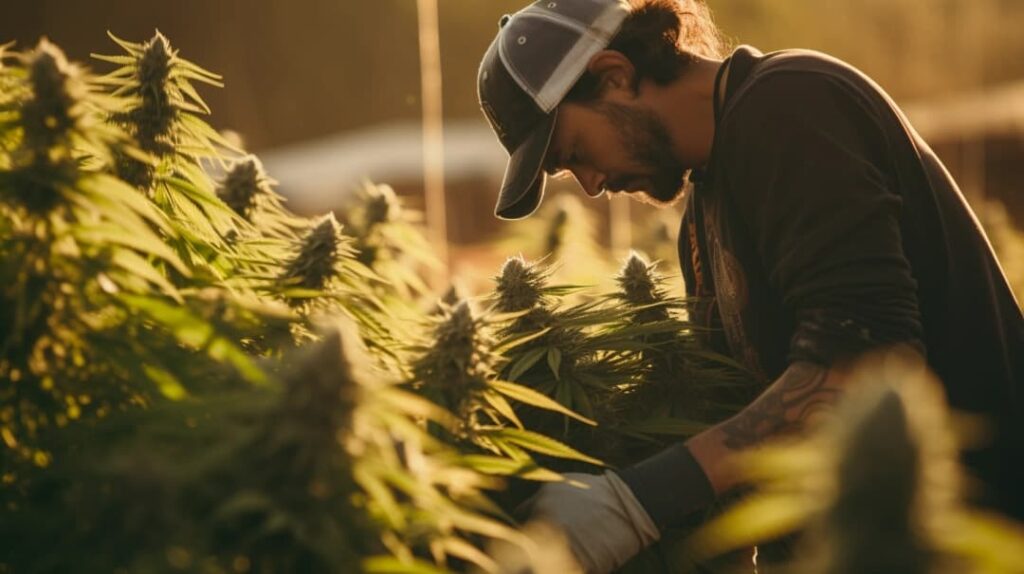Embark on an insightful journey into Denver dispensary’s cultivation expertise, where the art of harvesting cannabis flowers defines successful cultivation. Dispensaries navigate meticulous techniques to ensure a successful harvest, preserving the potency and quality of cannabis flowers. This blog delves into the intricacies of the harvesting process, exploring the steps dispensaries undertake to cultivate premium products.
From timing considerations to handling methods, dispensaries unveil their cultivation tips that elevate the final yield’s quality. The pursuit of organic certification adds an additional layer of commitment, reflecting dispensaries’ dedication to sustainable and quality-focused cultivation practices. Whether you’re a cultivator seeking refinement or a consumer eager for insights, this exploration unveils the nuanced and meticulous world of harvesting processes within Denver dispensaries. It’s time to peel back the layers of cultivation intricacies that shape the vibrant and thriving cannabis culture in Denver.
Timing of Harvesting
When timing your harvest, consider using a magnifying glass to closely examine the trichomes on your marijuana plants. This step is crucial in achieving the optimal harvest for your cannabis crop. Trichomes are small, crystal-like structures that contain the majority of the plant’s cannabinoids, such as THC and CBD. By observing the trichomes, you can determine the ideal time to harvest your plants.
Look for trichomes that have turned from clear to cloudy, as this indicates an increase in THC levels. Some growers even wait for a few amber trichomes to appear, signaling a higher CBD content. Timing your harvest correctly ensures that you maximize the potency and flavor of your marijuana. Additionally, it sets the stage for successful post-harvest techniques, such as drying and curing, which further enhance the quality of your final product.

Proper Trimming Techniques
When it comes to proper trimming techniques, there are several key points to consider. First, pruning is essential for achieving optimal yield and ensuring healthy, robust plants. Secondly, having the right trimming tools and equipment is crucial for efficiency and precision. Lastly, understanding the proper drying and curing methods is essential for preserving the quality and potency of the harvested cannabis. By focusing on these points, you can enhance the overall cultivation process and produce top-quality cannabis products.
Pruning for Optimal Yield
To achieve the highest yield possible, employ proper trimming techniques by utilizing a specific number of cuts and following precise guidelines. Pruning plays a crucial role in optimizing the yield of your cannabis plants. Here are three essential tips to help you achieve optimal results:
- Timing is key: Start pruning during the vegetative stage and continue throughout the flowering phase. This allows the plants to redirect energy to bud production and ensures ample airflow and light penetration.
- Focus on the canopy: Trim the top and outer branches to allow light to reach the lower parts of the plant. This promotes even growth and maximizes bud development.
- Remove the right parts: Trim away any yellowing or damaged leaves, as well as any branches that are blocking light or crowding the canopy. This encourages healthy growth and prevents the spread of pests or diseases.
Trimming Tools and Equipment
To properly execute the pruning techniques mentioned earlier, you will need a set of precise trimming tools and equipment. Investing in high-quality tools will not only improve the efficiency of your trimming process but also ensure that you achieve the best results. Start by acquiring a pair of sharp trimming scissors or shears, which will allow you to make clean cuts without damaging the plant.
Additionally, consider purchasing a trimming tray or table to collect the trimmed buds and prevent any loss. For larger-scale operations, electric trimmers can significantly speed up the trimming process. These tools are designed to trim multiple buds simultaneously, saving you time and effort. By using the right trimming techniques and equipment, you can streamline your trimming process and achieve higher yields with improved quality.
Drying and Curing Methods
When it comes to drying and curing your harvested cannabis, there are a few key points to consider. First, you need to create optimal drying conditions, such as maintaining a temperature between 60-70 degrees Fahrenheit and a humidity level of 45-55%. Second, curing is crucial as it allows the flavors and aromas of your bud to develop fully. Lastly, it’s important to note that drying typically takes around 7-10 days, while curing can range from 2-6 weeks or even longer for the best results.
To properly dry and cure your harvested buds, it is essential to use proper trimming techniques. Here are some tips to help you achieve the best results:
- Indoor vs Outdoor Drying: Consider the environment in which you will be drying your buds. Indoor drying provides more control over temperature and humidity levels, while outdoor drying may expose your buds to potential contaminants and unpredictable weather conditions.
- Best Practices for Curing: Curing is the process of allowing your buds to dry slowly in a controlled environment. Here are some best practices to follow during the curing process:
- Use airtight containers to store your buds.
- Burp the containers regularly to release excess moisture.
- Monitor humidity levels to prevent mold growth.
Optimal Drying Conditions
Maintain ideal drying conditions by controlling humidity, temperature, and airflow in your cultivation process. Proper drying and curing methods are crucial for preserving the quality and potency of your harvested cannabis. Here are three essential tips to help you achieve optimal drying conditions:
- Temperature and Humidity Control: Maintain a temperature of around 60-70°F (15-21°C) and a humidity level of 45-55% during the drying process. This will prevent mold and mildew growth while allowing the buds to dry slowly and evenly.
- Adequate Airflow: Ensure proper air circulation by using fans or ventilation systems. This helps to remove excess moisture and prevents stagnant air pockets that can lead to mold development.
- Dark and Controlled Environment: Store your drying buds in a dark and well-ventilated area. Avoid direct sunlight, as it can degrade the cannabinoids and terpenes. Additionally, keep the area clean and free from contaminants to maintain the quality of your harvest.
Importance of Curing
Curing is an essential step in the cultivation process that enhances the quality and potency of your harvested cannabis buds. Properly curing your buds can result in a smoother smoke, improved flavor, and a more enjoyable experience overall. The benefits of curing go beyond just enhancing the sensory experience; it also helps to break down the chlorophyll and other compounds that can contribute to a harsh smoke.
There are various curing techniques you can employ, such as dry curing, wet curing, or using curing jars. Dry curing involves hanging the buds upside down in a dark and well-ventilated space, while wet curing involves sealing the buds in an airtight container to encourage the breakdown of sugars and starches. Whichever method you choose, the key is to be patient and allow the buds to cure slowly over time.
Timeframes for Each
To achieve optimal results, it is important to carefully consider the appropriate timeframes for drying and curing your cannabis buds. The timing considerations and factors affecting harvest time play a crucial role in determining the quality and potency of your final product. Here are three key points to keep in mind:
- Drying Time: After harvest, it is recommended to hang your trimmed buds in a dark, well-ventilated area with a temperature of around 70°F (21°C) and a humidity level of 50-60%. The drying process typically takes 7-10 days, but this can vary depending on factors such as humidity, bud size, and strain.
- Curing Time: Once your buds are dry, they should be placed in airtight containers, such as glass jars, and stored in a cool, dark place. Curing allows the buds to develop their full aroma, flavor, and smoothness. This process usually takes 2-4 weeks, with the first week being crucial for the initial curing stage.
- Patience is Key: While it can be tempting to rush the drying and curing process, it is important to be patient. Giving your buds the proper time to dry and cure will result in a more enjoyable and potent cannabis experience.
Maintaining Ideal Growing Conditions
To ensure optimal growth, create an environment that provides consistent temperature, humidity, and lighting conditions. Proper humidity control is essential for a healthy and thriving crop. Maintaining the right levels of humidity can prevent the growth of mold and mildew, which can damage your plants. Invest in a humidifier or dehumidifier to regulate humidity levels accordingly.
Additionally, temperature regulation is crucial for successful cultivation. Cannabis plants thrive in temperatures between 70-85 degrees Fahrenheit during the day and slightly cooler temperatures at night. Installing a thermostat-controlled heating and cooling system can help maintain a stable temperature throughout your grow space. Remember, consistency is key when it comes to maintaining ideal growing conditions, which ultimately leads to higher yields and better quality buds.

Harvesting Different Cannabis Strains
When harvesting different cannabis strains, you’ll need to consider their unique characteristics and growth patterns. To ensure optimal bud quality and post-harvest storage, here are three important factors to keep in mind:
- Timing: Each strain has its own ideal harvest window, so pay close attention to the trichomes and pistils. Harvest too early, and the buds may not reach their full potential. Harvest too late, and the potency and flavor may decline.
- Technique: Different strains may require different harvesting techniques. Some strains may benefit from a gradual harvest, where you selectively harvest mature buds while allowing others to continue developing. Others may be best harvested all at once for uniformity.
- Drying and curing: Proper drying and curing methods are crucial for preserving bud quality. Ensure a controlled environment with proper airflow and humidity levels. Take the time to cure the buds slowly, as this can enhance their flavor, aroma, and overall smoking experience.
Maximizing Yield and Quality
To maximize your yield and quality, it is important to implement effective cultivation techniques and pay attention to key factors during the harvesting process. Increasing efficiency in your cultivation practices can lead to higher yields and better quality cannabis. One important aspect to consider is nutrient management. Providing your plants with the right balance of nutrients throughout their growth cycle can greatly impact their overall health and productivity.
It is essential to monitor and adjust nutrient levels regularly to ensure optimal plant growth. Additionally, maintaining proper lighting, temperature, and humidity levels in your cultivation area can also contribute to maximizing yield and quality. By creating an environment that mimics the natural conditions for cannabis growth, you can optimize the plants’ potential and achieve the best results during the harvesting process.
Final Thoughts
Mastering the art of harvesting cannabis requires attention to timing, proper trimming techniques, drying and curing methods, and maintaining ideal growing conditions. It is also essential to consider the specific characteristics of different cannabis strains to optimize yield and quality. By following these tips, Denver dispensaries can ensure a successful and fruitful cultivation process.


